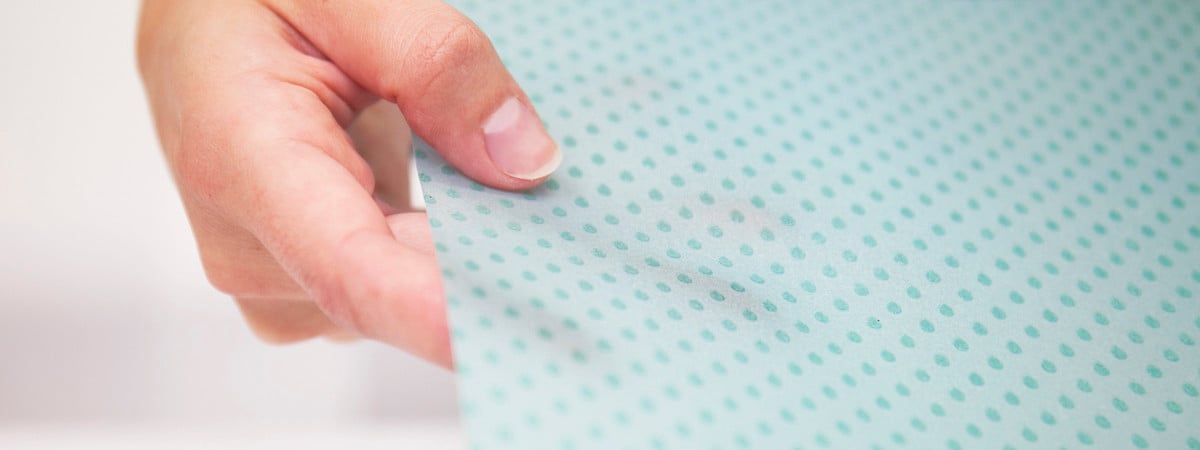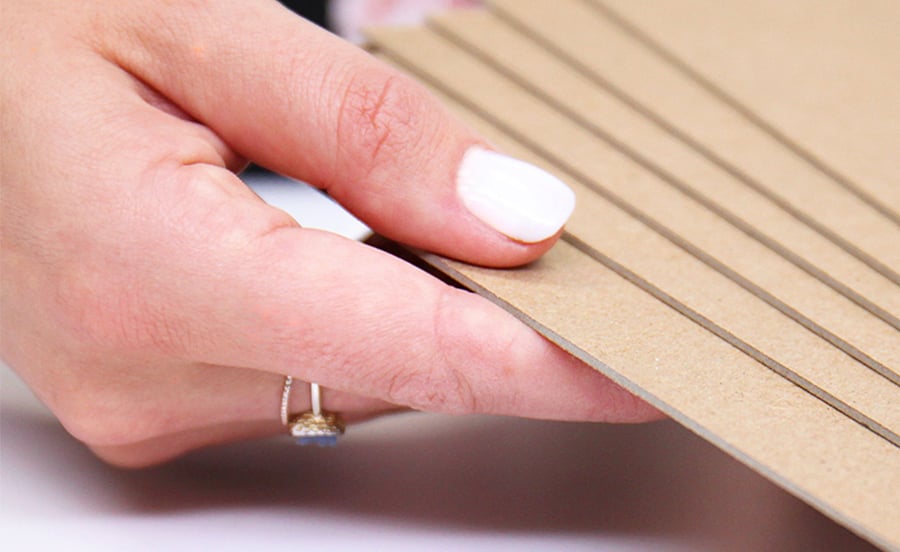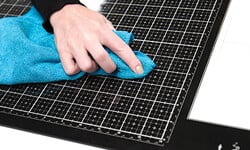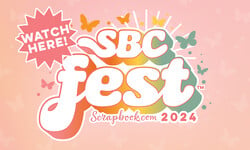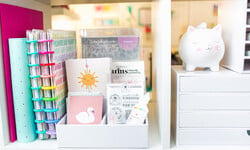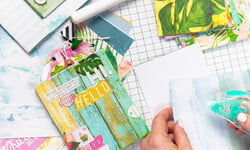From jotting down notes, to being handed a receipt, wrapping a gift, and the enormous world of paper crafting, paper is a paramount part of our lives, even in this digital age. With all of the different needs in the world that paper fulfills, it's easy to get lost within the different types, weights, uses, and more... and what does all of that even mean anyway?!
Below, we've compiled everything you need to know about craft paper! First, we've broken down a few instrumental terms for determining which paper you need, then, we go through the different paper types, expanding upon those terms to give you in-depth information on each!
If you're looking for specific information on a certain type of paper, you can use the nifty navigation bar on the right.
Our hope is for this handy paper guide to give you the paper knowledge you've been looking for so you can leave better equipped to choose the next paper you need! Check the very bottom of the article for additional, helpful resources about paper!
Where Was Paper Invented?
Paper, as we know it today, can be traced all the way back to 105 AD, in China. A man named Ts'ai Lun is credited with the invention. It was his idea to utilize bark from mulberry, hemp waste, old rags, and fish nets. Before 105 AD, dating as far back as 3000 BC, papyrus was the main surface for writing and was used in Egypt, Greece, and Rome.
Papyrus is paper's predecessor, as it isn't exactly paper, but simply sheets of papyrus stem cut, softened in water, then interwoven to form a mat. After being woven, it is pounded to be as flat as possible and laid out in the sun to dry to create a thick "mat" that can be written and drawn on.
Where Did Paper Get its Name?
The word paper comes from the Latin word papyrus (the plant used to make original "paper"), which comes from the ancient Greek word papuros!
How is Paper Made?
"Normal" paper that you find in the store (like printer paper, scrapbook paper, cardstock, etc.) is made at a Paper Mill where wood is ground down into a wet pulp (additives are occasionally thrown into the pulp to create different desired effects).
After the pulp is created, it passes into a machine where it is formed into a paper shape. If the end goal is to create a paper with texture, this is the stage where that happens. After the wet pulp has been shaped and possibly textured, it is pressed so the water can be squeezed out (fun fact: about 6% of the water remains in the paper after pressing!).
Depending on the type of paper being made, it is pressed with either a heated press or an unheated press. Using heat gives the end result a different effect than using an unheated press (more info on that can be found in the cold press and hot press sections below).
After the drying process, the papermakers then choose whether or not to add a finish or sizing to the paper, or to leave it uncoated. This depends on where the paper is going and what it will eventually be used for!
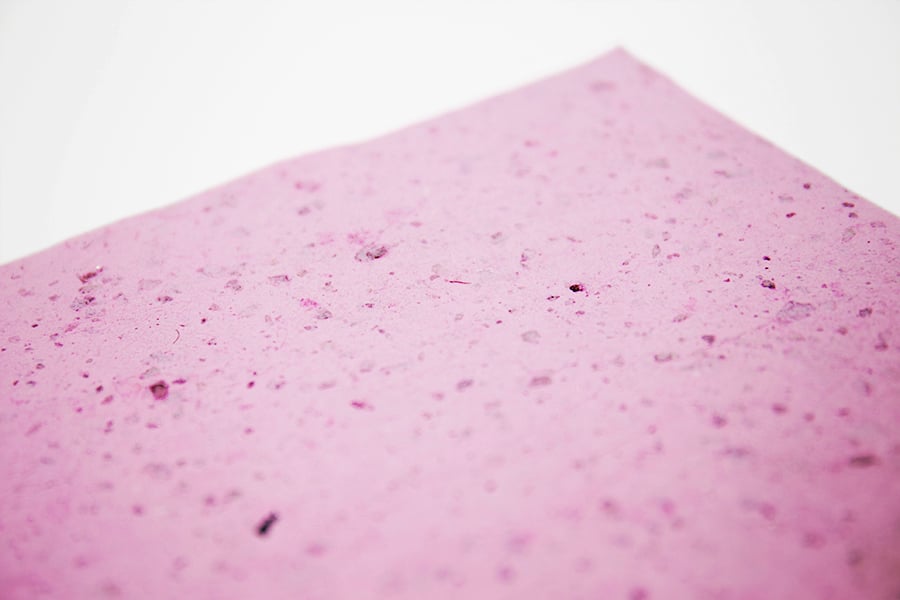
Handmade papers involve essentially the same process, but the tasks above are done by hand. Instead of using a machine or chemicals to grind wood down into a pulp, a man operated trip hammer, mortar and pestle, or other tool is used.
After being hand-ground, the pulp is then shaped into paper using a wire net, pressed, and dried. The result is usually a much more textured paper with more variety in transparency. When paper is handmade, each sheet ends up being unique in look!
How is Paper Weight Determined?
In this case, paper weight does not refer to the cute, heavy glass shapes we use to keep the papers on our desks from shifting - though those are inarguably delightful. Here, we're talking about the weight of a paper. But what does that mean?
The weight of a paper determines the heaviness of a sheet of paper. Lighter paper has a lower weight, whereas heavier paper has a higher one. Paper weight is measured by the manufacturer. It's the fixed weight of 500 sheets of said paper, stacked, then measured in pounds. 500 sheets of copy paper, for example, weigh about 20 lbs. Therefore, standard copy paper has a listed weight of 20 lbs. This is the U.S. measurement system. It is measured by GSM in Europe and other parts of the world.
Which Paper Weight Should I Use?
When you need a piece of paper for a project, consider the project you're making and what exactly that piece of paper will be doing in that project. Is it acting as a base for a card you plan to cake with embellishments? You'll want to choose a heavier weight cardstock. Is the piece of paper acting as a border for a picture? A lighter weight paper will suffice. Generally, paper weight ranges from 10-140 lbs.
- 10-55 lbs: Light weight paper
- 55-85 lbs: Medium weight paper
- 85-120 lbs: Heavy weight paper
- 120 lbs and up: Extra heavy weight paper
Here's a good way to decide which weight to choose:
- 20 lbs: You need a paper to jot down a note or make a copy. Thickness doesn't matter.
- 35 lbs: You need a paper that can be printed double-sided without it showing through on the other side, but still don't need it to hold much weight (like embellishments).
- 60-65 lbs: You want a paper that is heavier than copy paper, but it isn't going to hold too many embellishments or liquid adhesives. This is a common weight for lighter patterned scrapbook paper, drawing paper, and lightweight card stock.
- 80 lbs: You need a base for a card or a sturdy layout page. You'll be using liquid adhesives, embellishments, and might add some mixed media elements. This is the same weight as business cards.
- 90-110 lbs: You want to create high quality invitations or announcements. This is a heavy, high quality cardstock (perfect for heavy embellishments, paints, paste, ink, mixed media, and more). 110 lb paper is a great standard for card makers who want to add lots of embellishments.
- 140 lbs: You plan to be using lots of water on your paper (i.e. watercolor) or mixed media inks and other items. You need a thick, heavy paper that will have limited buckling, warping, and/or hold weighty embellishments.
What is Cold Press Paper?
Remember the part of the paper making process where the shaped pulp is pressed? That's where cold press comes into play. Cold press paper is paper that was pressed without any heat added. Due to the lack of heat, the paper's end results has specific characteristics that are only achieved through "cold" pressing. Characteristics unique to cold press papers:
- More tooth ("Tooth," in paper, refers to the texture. Cold press papers are infamous for being "bumpier", or having more tooth)
- Absorbs water very well
When to Choose Cold Press Paper
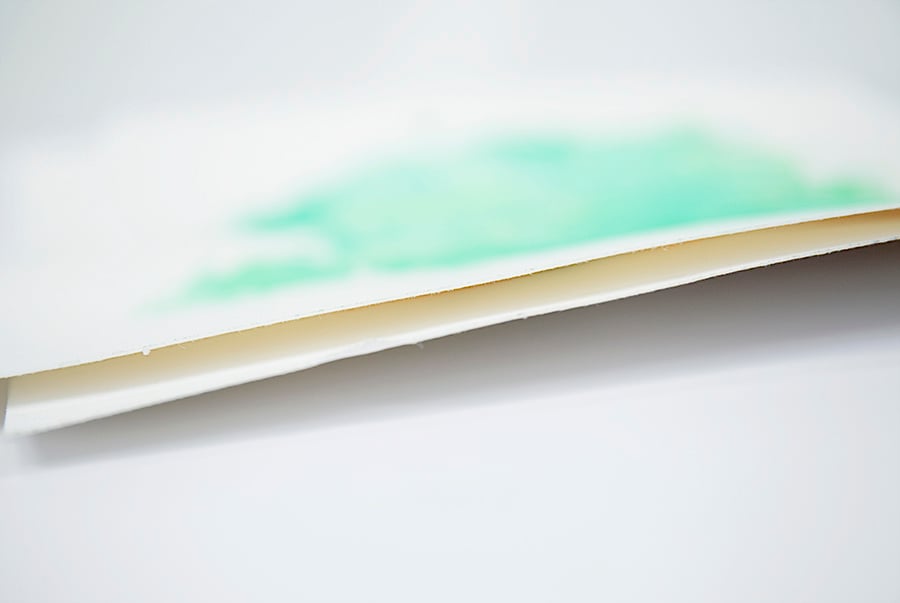
Unless you are hand drawing or using mixed media, the pressed temperature of your paper doesn't really matter. However, it's good to know when a cold press paper is the more ideal choice. Use cold press paper if you:
- Plan on using large amounts of water, ink, or paint (the tooth of the paper will help absorb the water!)
- Are painting Watercolor
- Aren't focused on fine lines or detail (cold press paper is textured, so it's harder to create clean, smooth lines)
- Want colors that aren't intensely saturated (the tooth of the paper will absorb some of your color)
- Want to add lots of layers (because of the tooth, the paper will be able to absorb more, thus hold more)
What is Hot Press Paper?
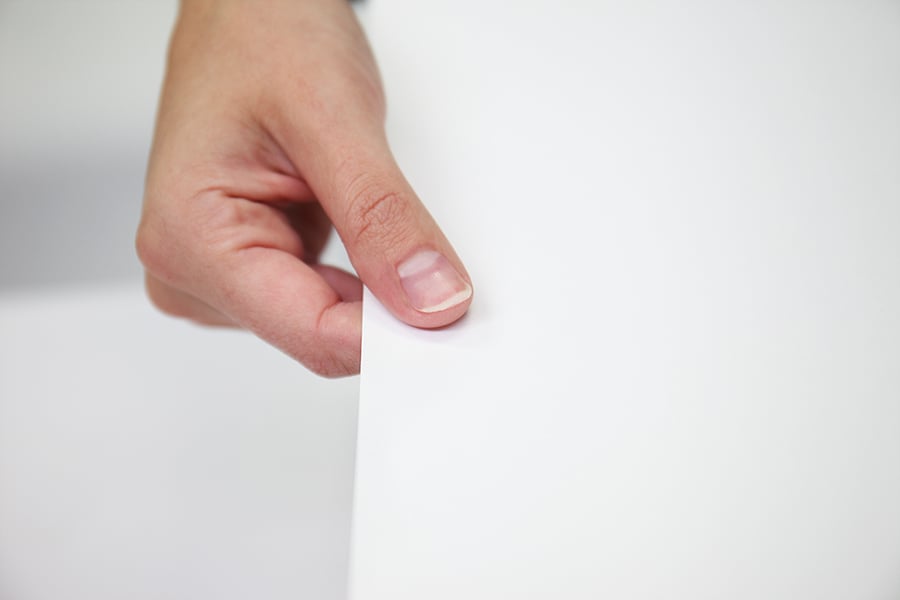
Hot press paper is the exact opposite of cold press. During the paper making process, when the shaped pulp passes through, the press is heated. This is done to obtain specific characteristics to create a paper better suited for particular tasks. Characteristics found in hot press papers:
- Smooth, less tooth (the heat in the press takes the texture out of the paper, creating a smooth surface)
- Does not absorb water as well
When to Use Hot Press Paper
Hot pressed papers are more common than cold press, as a smoother paper is often more desirable due to the fact that it's easier to write legibly and print on. Use hot pressed paper if you:
- Aren't using a ton of water or mixed media supplies (because the paper has a smoother surface, it won't be able to absorb as much liquid, meaning the liquid will sit on the surface and the paper will take longer to dry)
- Are creating something where fine, clean lines and detail are important
- Don't need to add a lot of layers
- Want very bright, vibrant colors - aren't too concerned with dry-time.
What is Lignin in Paper?
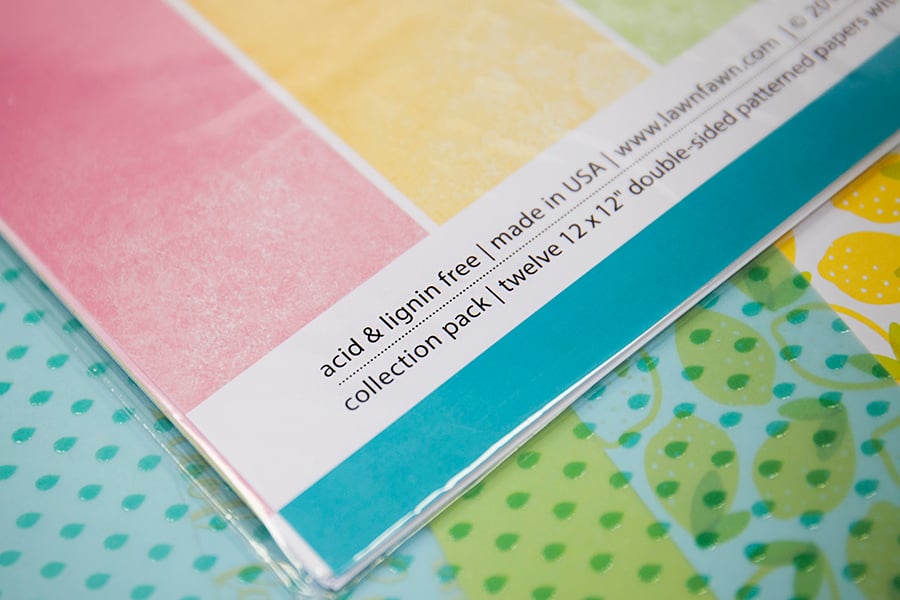
Lignin is a naturally occurring polymer (like starch, rubber, and cotton) and is found in wood. Since paper is usually made from wood, lignin is also present in paper. Because Lignen is acidic by nature, it is usually neutralized by adding a basic chemical to the pulp during the paper making process.
When it comes to wood, lignin is found in the cells. It helps with structural support and moving water to different parts of the plant. It's very good for trees and algae, but not so good for preserving memories, due to its acidic nature!
Why Use Acid Free Paper?
Short answer: Paper that is not deemed "acid-free" will break down and decompose over time. Paper made from wood naturally contains acid, so it has to undergo a special process to change this. The site Archival Methods has written an article about acidity in paper that's very helpful, but in short, if you'd like your paper craft work to last your lifetime and on, it's crucial to use acid-free paper.
Here's why: paper today is most often made from using wood pulp (read How Paper is Made above for more info). It's been found that if the lignin is not removed from the pulp during the paper making process, the paper becomes brittle and yellows with time - which is bad news for your beloved family photos and documents! It gets even worse - the process is sped up when lignin is exposed to light and heat, meaning old documents created with or crafted with paper that isn't lignin free can be at danger.
Read this article about preservation to learn more about what you can do to ensure your documented memories last a lifetime.
What is Paper Sizing?
Sizing is an agent that is used on the surface of paper (during manufacturing) that changes the paper's functionality. Sometimes, sizing agents are added as a filler, while sometimes they are added as a finish or a glaze. The most common reason to add sizing is to make paper more water-resistant, which combats ink blurring and bleeding.
However, sizing creates other effects as well. Papers with sizing are easier to print on and more durable, thus are more easily preserved. Sometimes, brightening agents are mixed with sizing agents to also make the paper a brighter, cleaner white.
Paper can be sized to different degrees or left unsized. Unsized papers are extremely absorbent. When ink is dropped onto them, the paper absorbs it and the ink bleeds. Watercolor paper, for example, is an unsized paper. When papers have varying rates of absorbency, strength of sizing is typically the reason.
What is a Paper Finish?
After paper has undergone the normal paper making process, the papermakers decide whether or not to coat the paper with a finish - for aesthetic and/or functional purposes. Some papers are left uncoated, which affects how the paper ends up looking, acting, and eventually being chosen and used. Sizing can also be a finish, though this agent usually can't be seen with the eye and is more about practicality and functionality than aesthetic.
Popular paper finishes include: Dull, Gloss, Matte, and Satin.
What Paper Can be Recycled?
Most craft papers can be recycled, however, there are a few that cannot. You can find more information here on which paper products can and cannot go in the bin.
Different Types of Paper
There are many many different types of paper. Below are common types of paper and their uses.
Scrapbook Paper
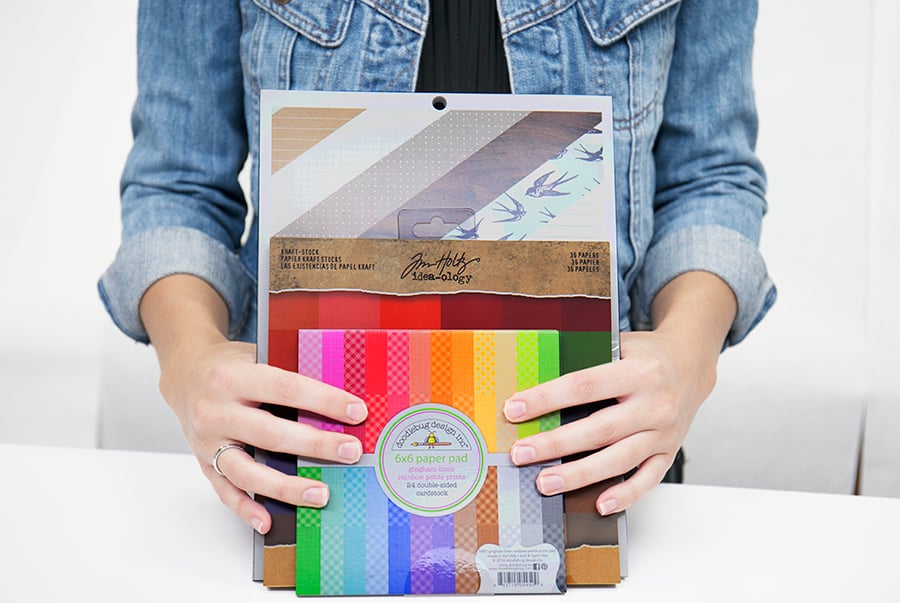
Scrapbook paper is an all-encompassing phrase that includes any paper made for and associated with scrapbooking. Scrapbooking paper can include (but isn't limited to): Acetate, Cardstock, Kraft, Patterned Paper, Printing Paper, Vellum, and more.
Acetate Paper
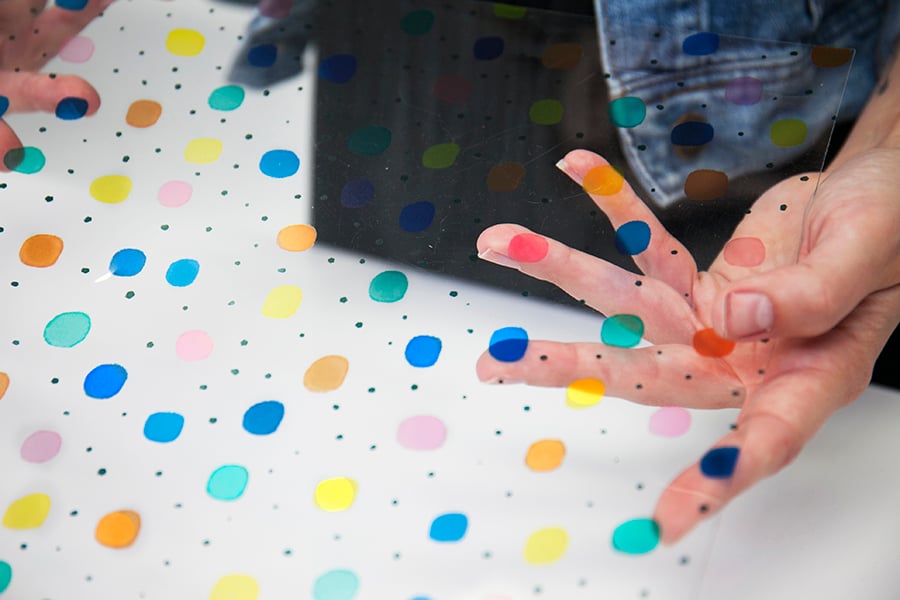
What is Acetate Paper?
Acetate paper is a transparent paper that is commonly used in scrapbooking and card making. It's mildew-proof, easy to cut, and inexpensive. Some pocket pages and page protectors (used to store and protect layouts, photos, ephemera, and more) are made with acetate as well.
Acetate paper can be purchased clear, in solid colors, or with patterns and designs to create pages that are partially transparent, partially opaque!
When to Use Acetate Paper
Aside from pocket pages and protectors, acetate is used in a variety of ways in crafting. Some of its most popular uses are as a decorative overlay on layouts or cards, and when creating cards with windows. It's a fun and easy way to add layers of dimension to your projects.
Acetate Paper Sizes
Popular sizes of acetate paper for paper crafting
- 5" x 7"
- 6" x 6"
- 12" x 12"
- Mixed sizes, typically under 4" x 4" as ephemera
Acetate Paper Thickness
Acetate paper is available in a variety of thicknesses, from a very thin film to a thicker, sturdy sheet. When purchasing acetate paper online, make sure to read the product descriptions and look at the pictures to determine whether or not it's the thickness you need for your project.
Can You Print on Acetate?
Most home printers were not designed to print on acetate. Make sure you always check your printer recommendations to see what it can and cannot print on. However, with that being said, many crafters do print at acetate on their home printers, using Inkjet Acetate.
If you do print on acetate at home, make sure you print on the rough side of the acetate paper, not the glossy, smooth side. If both sides of the acetate paper are glossy, printing on it is not recommended. Always read information about your printer and its uses - and always proceed with caution if unsure.
Acetate Paper Common Uses
- Pocket Page Scrapbooking
- Cards with Windows
- Shaker Cards
- To Create Artistic Layers
- Planner Dashboards
Where To Buy Acetate Paper for Crafting
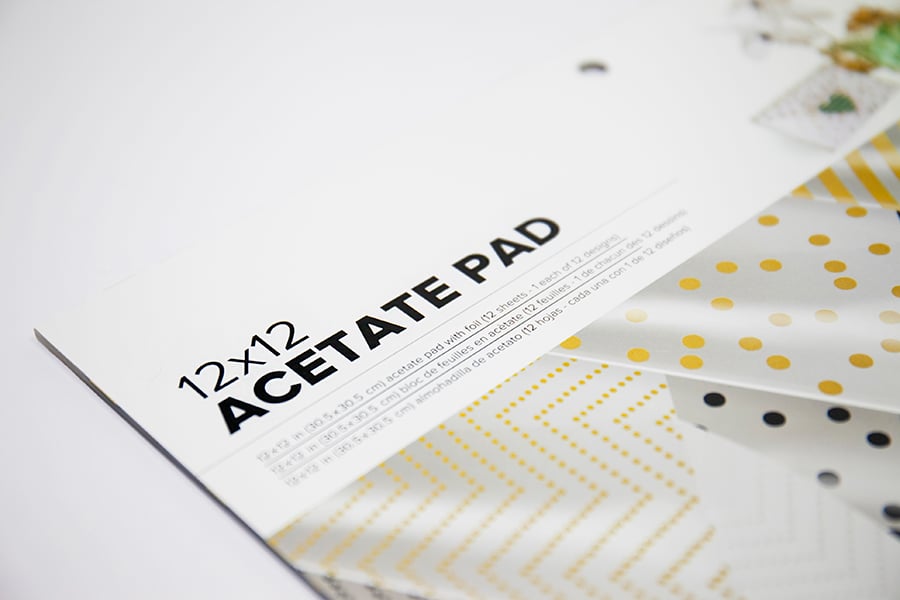
American Crafts has a variety of transparency papers to choose from - some being acetate, some being vellum.
Cardstock Paper
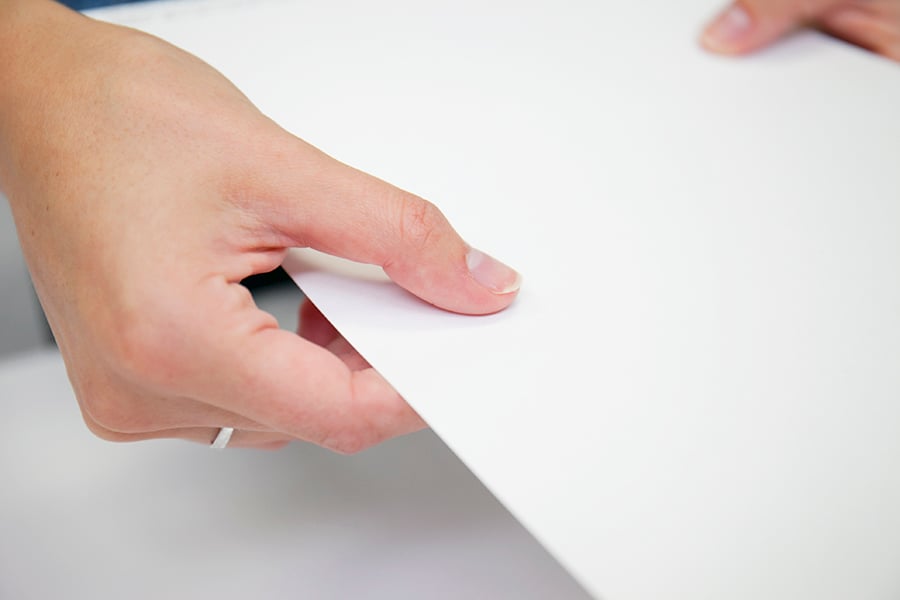
What is Cardstock Paper?
Cardstock paper is a common paper for crafters, as it is more durable than regular printer paper and comes in a variety of sizes and finishes. Nowadays, cardstock paper is typically acid and lignin free (read more about why that's important here), but make sure to double check when purchasing so you can keep your memories preserved without the worry that acidity is lurking!
When To Use Cardstock Paper
Acid-free cardstock is commonly used as the base for layouts in scrapbooking, since it can hold weight, won't buckle with the use of liquid adhesive, and won't destroy your beloved family photographs and ephemera. It is also often used as a base for cards in cardmaking, tag making, and die cutting. Use cardstock paper when you need a heavier paper to withstand the weight of glue, embellishments, and other decorative elements.
Cardstock Paper Sizes
Popular sizes for paper crafting:
- 6" x 6"
- 8" x 8"
- 8.5" x 11" (standard copy paper size)
- 12" x 12"
Cardstock Paper Weights
Standard weight: 80 lbs
However, cardstock weight varies from 65 lbs to 110 lbs.
Cardstock Press Temperature
Can be either hot press or cold press
Cardstock Paper Finishes
Standard Cardstock: Uncoated paper
Irridescent Cardstock: Coated cardstock that shines and shimmers when you move it back and forth, typically showing a beautiful variety of subtle color as light passes over it.
Glitter Cardstock: Cardstock that has a coating of glitter over the top. Glitter cardstock comes in a variety of colors with the glitter-quality varying. Some papers have large chunks of glitter, while some have very fine particles of glitter. It completely depends on the designer and company creating the paper. Some glitter papers leave a glitter residue on your hands, while others leave much much less, occasionally none at all.
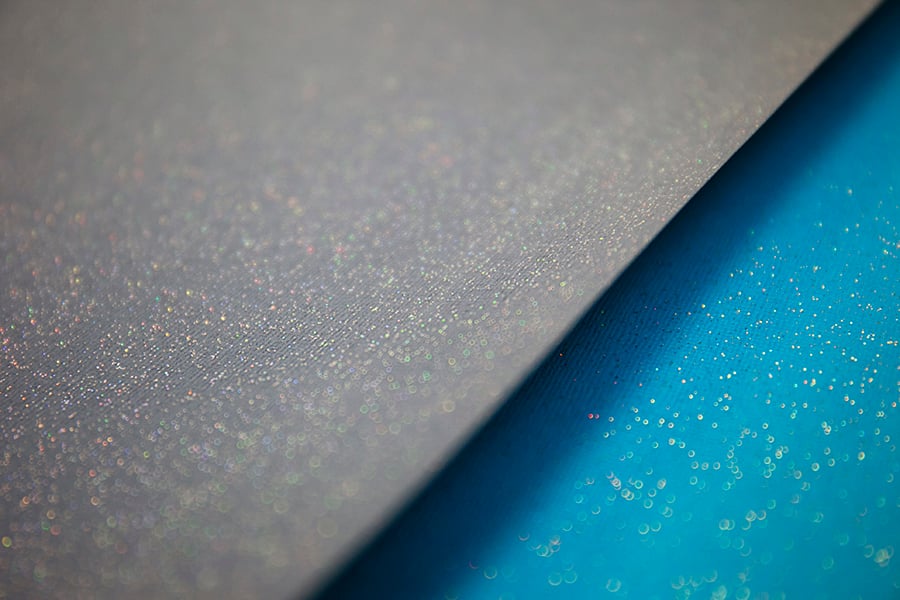
Glossy Cardstock: Cardstock finished with a beautiful, shiny coating.
Matte Cardstock: Cardstock that does not shine or shimmer when you move it in the light. The coating is dull and not lustrous at all.
Textured Cardstock: Cardstock that has been textured during manufacturing to look a variety of ways. It may have been embossed to have small polka dots bumped up (for example), or perhaps it has a bumpy, organic texture. It may also have additives that give it an extra texture, like pieces of confetti or chunks of glitter.
Textured cardstock is commonly found to look like canvas or linen. Bazzill Basics is known for creating a variety of collections with distinct patterns. If you love patterned paper, they are a must to have in your repertoire.
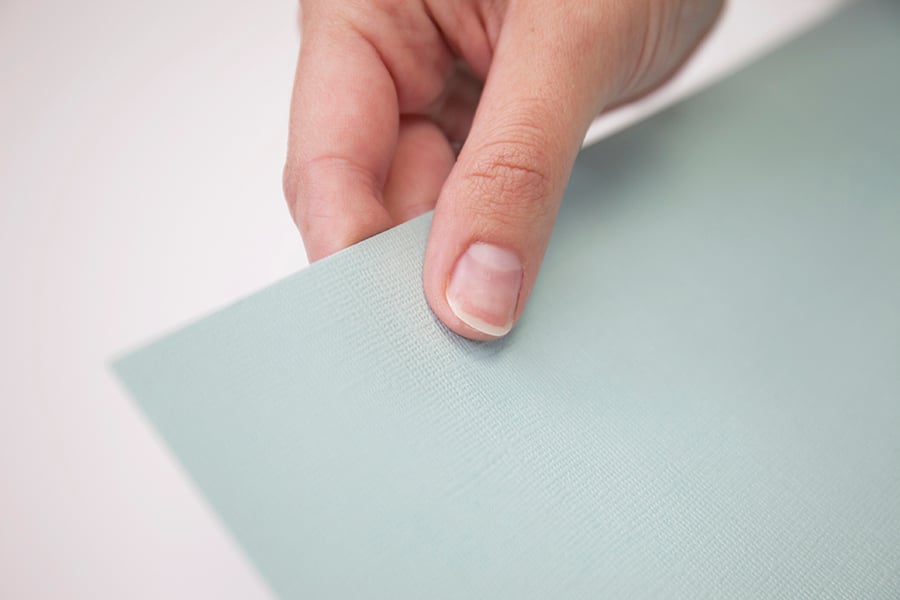
Can You Print on Cardstock?
Yes. Most cardstock papers can be printed on. Printing on glitter or heavily textured cardstock is not recommended, as it will not print evenly and may smudge and smear.
Cardstock Paper Common Uses
- Card making
- Die Cutting
- Scrapbook layouts
- Stamping
Printing Paper
What is Printing Paper?
Printing paper is standard copy paper and typically comes in 8.5"x 11", standard letter size for printing text and making copies.
When to Use Printer Paper?
Use printer paper when printing text that doesn't need to be on a heavier paper, notes, letters, or instructions. Printer paper is also great for jotting down notes or as scrap paper.
Printing Paper Sizes
- 8.5" x 11" is the standard printer paper size
Printing Paper Weight
Standard weight: 20 lbs
Printer paper weight can vary from 20 to 30 lbs, so make sure you read the paper description if weight is important in your final decision.
Specialty Printing Paper
Even though the printing paper standard is so common, printing paper can come in additional sizes. Printing paper is available in a variety of colors, though they are typically of the pastel variety, so printer ink can still be read and seen easily. For printing letters, quotes, lists, and more, designed papers can be found with anything from clouds and suns to balloons and confetti, making your special typed notes that much more memorable.
Common Uses for Printing Paper
- Printing
- Making Copies
- Taking Notes
- Doing Sketches
- Writing Letters
Kraft Paper and Butcher Paper
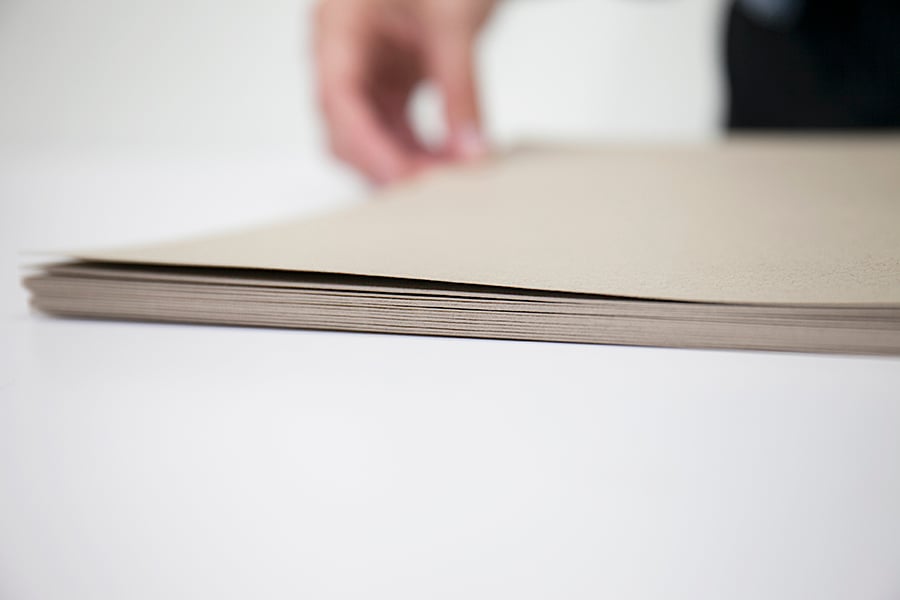
Kraft paper, sometimes known as butcher paper (unwaxed), is a brown paper that sways rough and is typically used for wrapping and packaging purposes. It is designed to be more elastic than other papers, which means it doesn't tear or rip as easily - perfect for packaging! Brown paper bags and sacks are a form of kraft paper, called sack kraft paper.
Candy wrapping paper is, surprisingly, also a type of kraft paper! Kraft papers are typically brown, but can be bleached white, or bleached and then dyed another color, like the rolls of butcher papers you see in classrooms.
When to use Kraft Paper
Because kraft paper is typically on the thinner side, it's best used for projects where longevity isn't necessarily the name of the game. Kraft paper works great when layering, for faux-packaging D.I.Y. decor, for homemade gift wrap, and as a decorative embellishment. It's great for children to use with crayons or markers (just make sure you have another layer underneath, in case the marker bleeds).
Kraft/Butcher paper also works well as a protective surface for your table when dying Easter eggs or using watercolors (it works like newspaper, so doubling up might be a good idea).
Kraft Paper Sizes
In crafting, kraft paper is used in a wide variety of ways, from paper to journal covers, and from kraft sticker sheets to paper pads, so sizes can vary greatly. For scrapbooking, kraft paper can easily be found in a 12" x 12" format.
When purchasing rolls of kraft paper or butcher paper, the sizes also vary - from "wrapping paper" amounts to commercial amounts. Roll sizes are typically measured in height (how long the roll is) and range anywhere from 12" to 48" or more, with varying amounts of paper in feet.
Kraft/Butcher Paper Weight
Standard Weight: 40 lbs
Weight can vary depending on the product. Scrapbook kraft papers tend to be on the heavier side, while kraft "goodie" bags tend to be on the lighter.
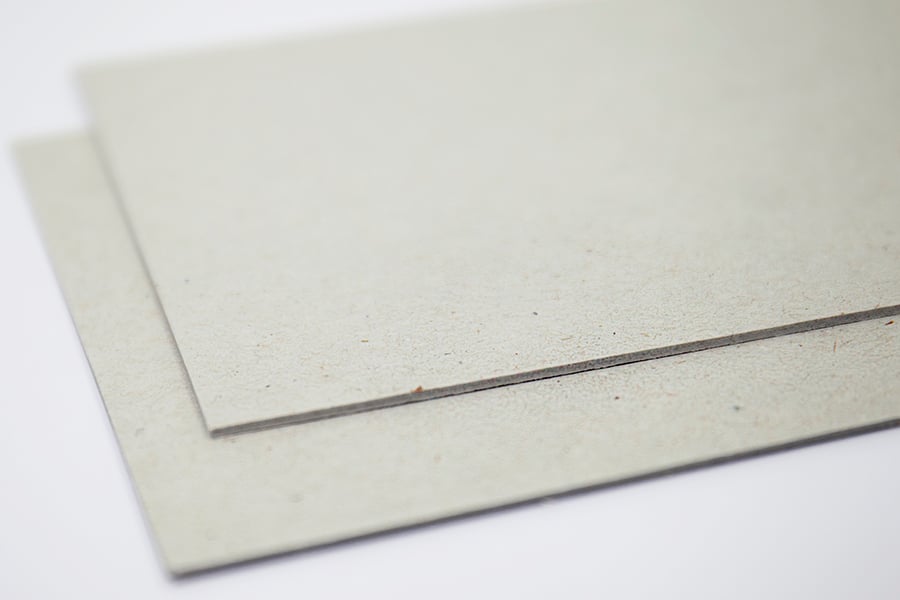
Specialty Kraft and Butcher Paper
Kraft paper, for crafting purposes, can come in a large variety of forms. Some of the popular forms are:
Kraft Paper with Gold Accents
Patterned Kraft Paper
Kraft Paper Pads
Kraft Paper Tags
Kraft Paper Envelopes
Kraft Paper Banners
Where Can I Buy Kraft Paper for Crafting?
Bazzill Basics has a large variety of kraft paper that is high quality. Graphic 45 offers a variety of kraft staples - like small boxes and tags!
Chipboard
What is Chipboard?
Chipboard is a heavy duty paper that is common in crafting. It is usually textured (particularly if it's in the Kraft color variety), but doesn't have to be.
What do you use Chipboard for in Scrapbooking?
Chipboard is commonly used as a heavy base, in die cutting thicker embellishments, and for creating journal or album front and back covers. It is commonly used with the Cinch Bindery Tool.
Common Chipboard Sizes
8.5" x 11"
12" x 12"
Additional sizes may be available based on manufacturer
Common Chipboard Width
20pt (thinner)
50pt (medium thickness)
52pt (medium thickness)
85pt (thick)
90pt (very thick)
Patterned Paper
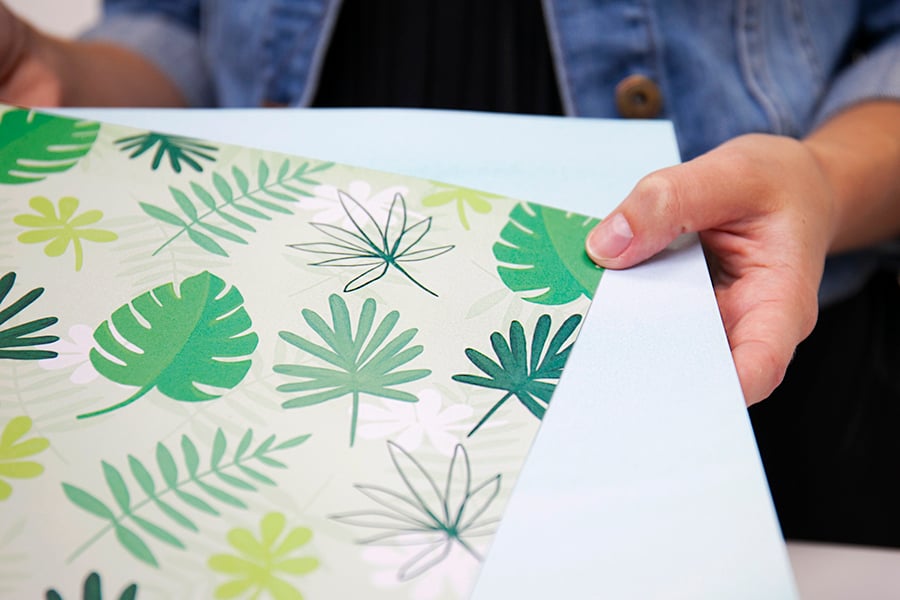
What is Patterned Scrapbook Paper?
Patterned Scrapbook Paper is paper designed specifically for scrapbooking (neat, right?)! However, nowadays, patterned scrapbook paper is used for all types of paper crafting - from scrapbooking to card making, and die cutting to bible journaling! It can usually be purchased in 12" x 12" single sheets, or in collection pads. Patterned Paper can be single-sided or double-sided.
When it is double-sided, the design is usually different on the back, but pairs nicely with the design on the front.
How is Patterned Paper Different than Cardstock?
Though some cardstock papers can (and do) have patterns, they are a bit different than patterned scrapbook paper. Cardstock is typically heavier and thicker than patterned paper, tends to have more texture, and is more likely to be embossed. Of course, it's important to keep in mind that there are always exceptions to the rule.
What Are Patterned Paper Pads?
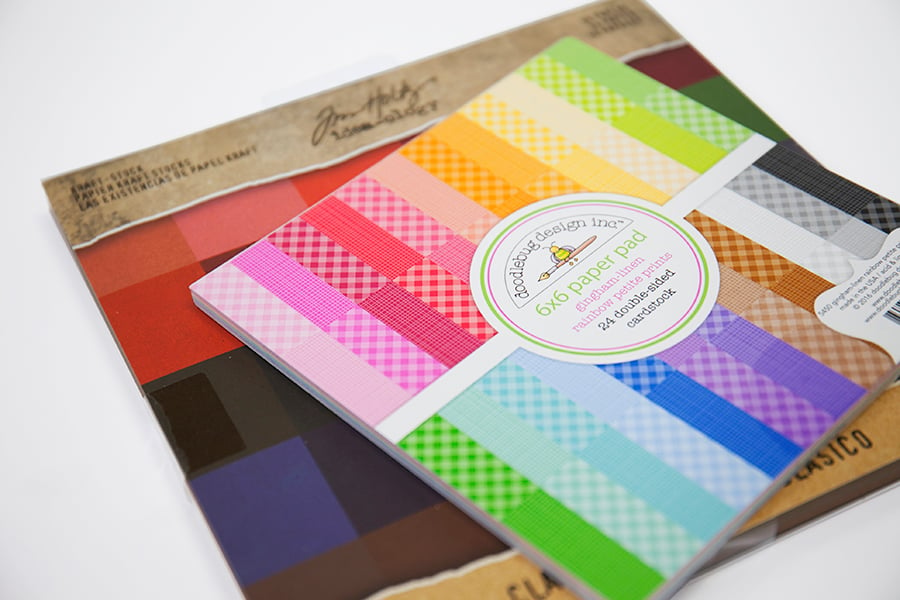
Patterned scrapbook paper typically comes in pads. These pads are available in a variety of sizes, the most popular being 6" x 6" and 12" x 12" - perfect squares, though some other sizes exist and are available. How the pads are organized is very dependent on the brand and designer. Some brands have double-sided patterned papers, while some have single. Most brands offer the same patterned paper pad in both 6" x 6" and 12" x 12" options.
A common amount of paper for paper pads to have is 24. Usually, there are doubles or triples of the same pattern within the pack, so you have more to work with, but sometimes there are more or less. They can also contain single-sided patterns, or double-sided. Because paper pads vary so greatly, make sure to read the descriptions to see what the paper pad contains before you decide whether or not it will work for what you intend to use it for.
Patterned Paper Sizes
Popular/Standard patterned paper sizes:
6" x 6" pads
12" x 12" singles or pads
Uncommon patterned paper sizes:
8" x 8" pads
6" x 8" pads
6" x 12" pads
8.5" x 11" pads
Patterned Paper Weight
Standard Weight: 60-65 lbs
Patterned paper weight varies, but a standard weight is 60-65 lbs (being a medium weight paper).
Specialty Patterned Paper
With patterned paper, the possibilities are nearly endless. When it comes to the patterns available, the sky is the limit. When it comes to true specialty options, the finish of the paper is the name of the game.
Patterned Paper with Foil Accents: Patterned paper with accents of shiny gold, silver, copper or other colored foil accents. These can be polka-dots, stripes, and more.
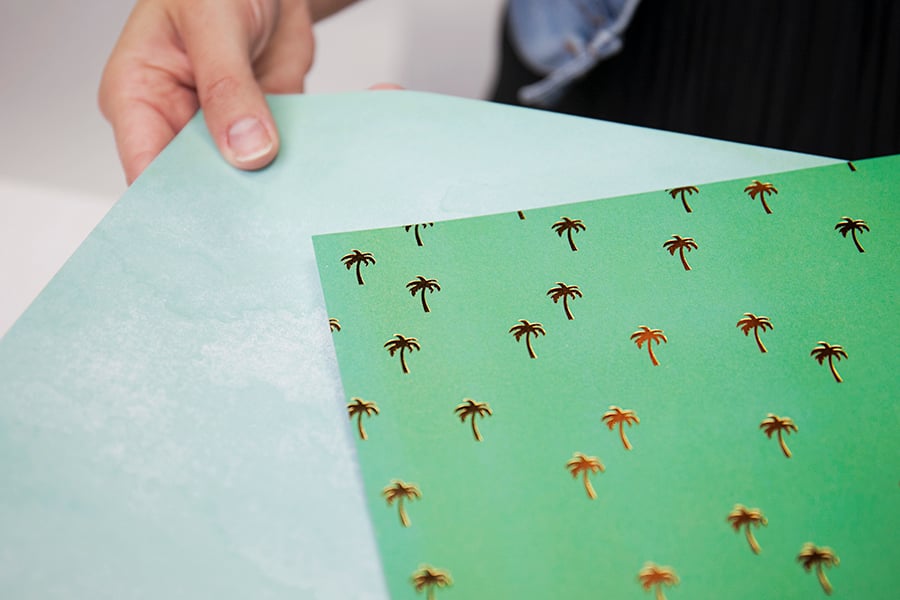
Patterned Paper with Glitter Accents: Patterned paper with finishing touches of glitter.
Glossy Patterned Paper and Varnished Patterned Paper: Patterned paper that has a glossy finish to make it sheen.
Embossed Patterned Paper: Patterned paper that has indentations of designs or shapes.
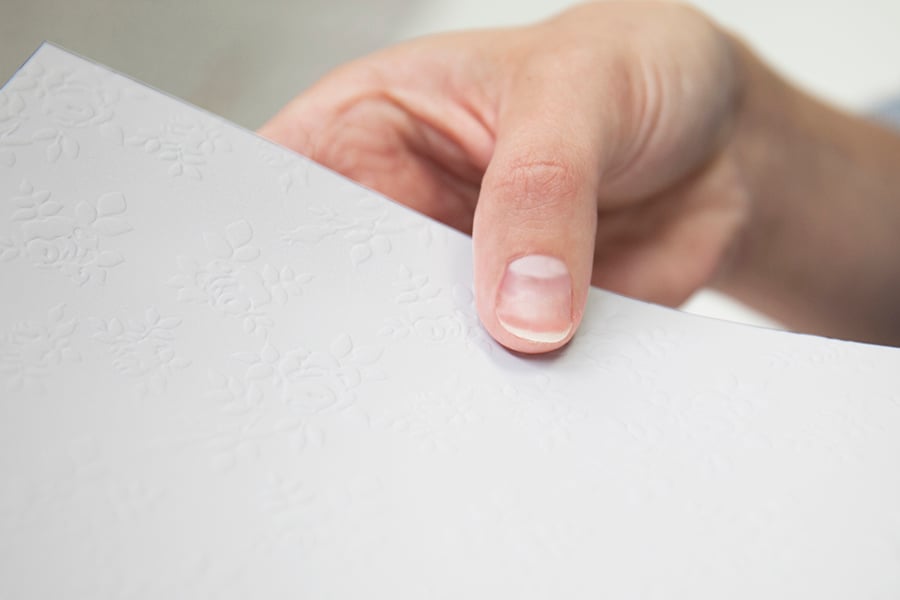
Can You Use Patterned Paper in a Printer?
Technically, yes. You can print on most patterned papers. However, it's important to keep in mind that the sizes of patterned paper are not typically printer-friendly, so you'll need to either cut-down the paper or adjust your printer settings. Also, many patterned papers are ornate or colorful in design, so your printed text or images may not show up well. Printing on specialty patterned papers is not recommended.
Where can I Buy Patterned Paper for Scrapbooking?
Scrapbook paper can be found at virtually every craft store! Some of the most popular scrapbook paper brands are: Graphic 45, Simple Stories, American Crafts, and Doodlebug Design!
Vellum Paper
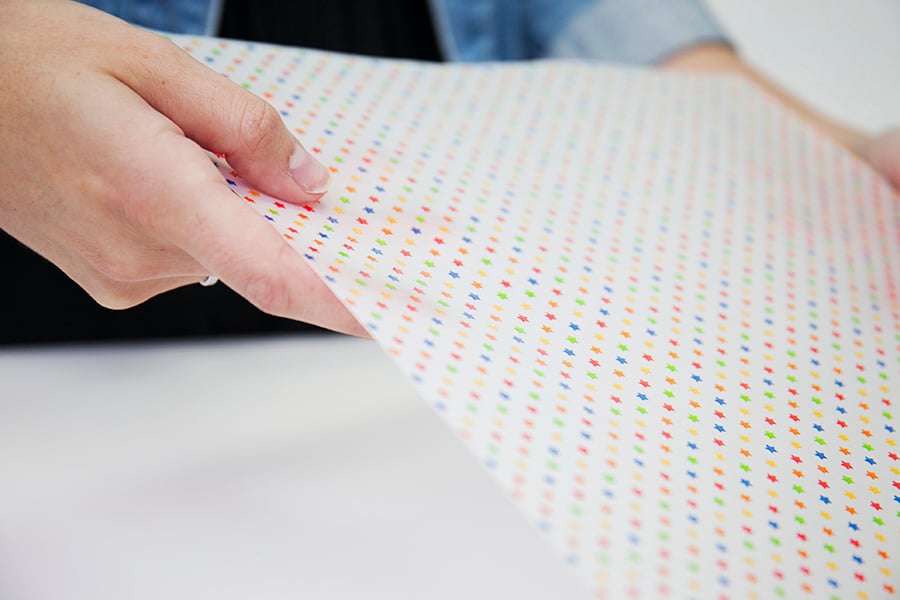
What is Vellum?
The word vellum actually defines two different kinds of paper - one, being a type of paper that isn't as smooth as standard paper, and the other being a translucent paper. Here, we're talking about the latter. The majority of papers are made from trees, but vellum paper is made out of cotton, which makes it less porous and not quite as strong. Vellum comes in a variety of weights, but is always on the lighter side, heavy weighted vellum being lighter weight than cardstock.
What Do You Use Vellum For?
In crafting, vellum can be used in ways that mirror other paper types. Vellum can be used as decorative accents, borders, overlays, and more. Because it can be purchased in a variety of weights, the potential uses depend on the heaviness of the paper.
A very lightweight vellum might work beautifully as an overlay, while a heavy weight vellum might be perfect for an invitation or card insert. Because vellum isn't very porous, inks will take longer to dry on it - so keep that in mind.
Vellum Sizes
Popular sizes:
8.5" x 11"
12" x 12"
Vellum, for crafting, can be purchased in packs and single sheets (depending on the brand). Ephemera is also offered in vellum for cool effects.
Vellum Weight
Standard Weight: around 48 lbs
Light weight vellum is very thin, 17 lbs. Heavy weight vellum can be over 100.
Specialty Vellum
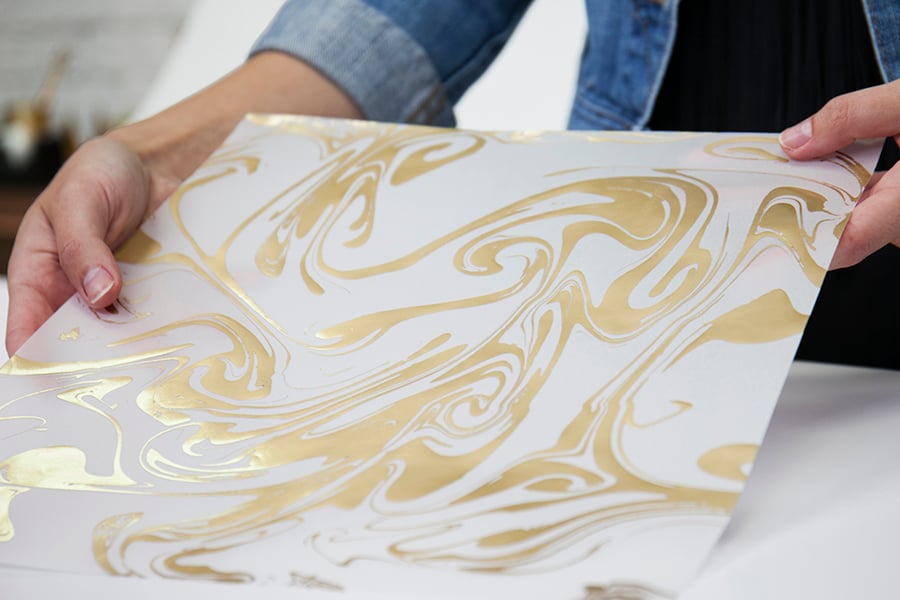
Like other papers, vellum can come in a variety of sizes and styles, some with gold accents, some with glitter, and more.
Can You Print on Vellum?
Sometimes. Putting light weight vellum through your printer is not recommended as the printer can eat it, so it crumples and jams. Because of the non-porous surface that vellum has, inks also have a tendency to smudge and smear. Lastly, sometimes your printer won't even recognize vellum because it's too lightweight or sheer!
Popular Uses for Vellum
For embellishing cards and layouts
Often found in ephemera
As a card/invitation/program insert
Die cutting
Conclusion
We hope that this article gave you more information on paper that you can utilize the next time you shop for paper. Understanding different types of paper can help you make informed decisions so you can choose the paper that is going to be the best helper in the role you need it for in your papercrafting projects!
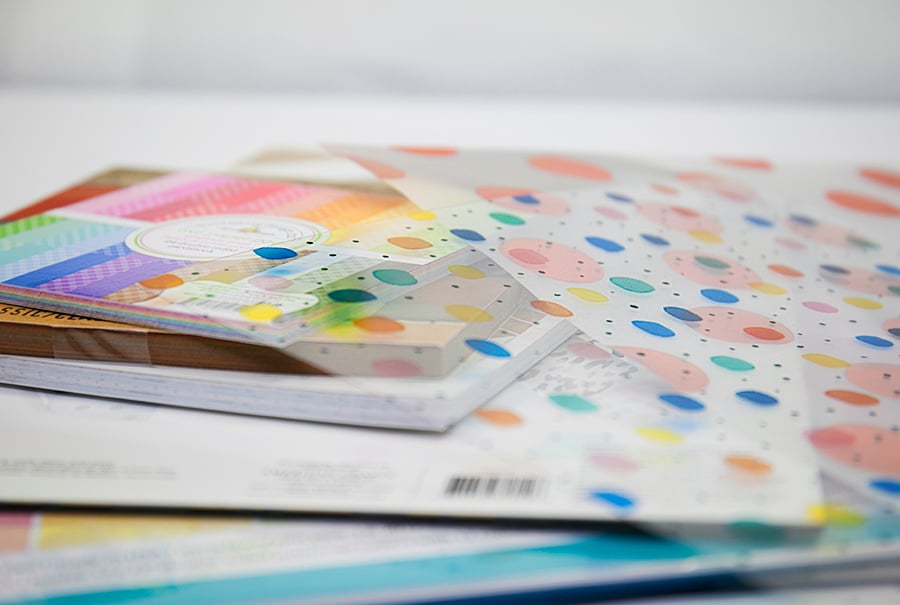
Happy Crafting!
Additional Resources
More on paper weights and GSM
More on paper sizing
More about how paper is made

